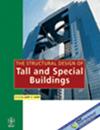基于机器视觉的钢筋混凝土柱地震诱发漂移比自动量化
IF 1.3
3区 工程技术
Q3 CONSTRUCTION & BUILDING TECHNOLOGY
引用次数: 0
摘要
本文提出了一种利用表面裂缝图像分析估算地震后钢筋混凝土柱地震峰值层间位移比的新方法。通过考虑广义分形维数,得到了损伤钢筋混凝土柱裂纹图像的复杂性和不规则性的定量表示。作者编制了一个由445张裂缝图组成的综合数据库,这些裂缝图是由110个呈现双曲率变形模式的矩形RC柱试件的循环试验获得的。作者利用该数据库来开发和验证所提出的程序。研究数据库包含广泛的结构和几何特征。开发了五个封闭形式的方程,目的是估计地震事件中RC柱所经历的峰值IDR。利用符号回归技术推导了预测方程,输入参数根据列特征参数的可用性而变化。结果表明,广义分形维数,特别是D−1,是基于视觉的RC柱损伤指标,在考虑的方案中,与IDR的相关系数在0.82至0.92之间。通过经验方程得到的地震峰值IDR可作为地震损失估计框架中的输入工程需求参数(EDP)。这允许确定混凝土建筑物的结构和非结构部件超过破坏状态的概率。最后,通过将该方法应用于2017年发生的Kermanshah 7.3级地震中受损柱的实际案例,对该方法的实际实施进行了检验。本文章由计算机程序翻译,如有差异,请以英文原文为准。
Machine vision‐based automated earthquake‐induced drift ratio quantification for reinforced concrete columns
Summary This paper presents a novel method for estimating the seismic peak interstory drift ratio (IDR) in reinforced concrete (RC) columns after an earthquake using surface crack image analysis. The quantitative representation of the complexity and irregularity of crack images in damaged RC columns is obtained through the consideration of the generalized fractal dimensions. The authors have compiled a comprehensive database consisting of 445 crack maps obtained from cyclic experiments conducted on 110 rectangular RC column specimens exhibiting double‐curvature deformation mode. This database is utilized by the authors to develop and validate the proposed procedure. The research database contains a wide range of structural and geometric features. Five closed‐form equations are developed with the objective of estimating the peak IDR experienced by the RC columns during a seismic event. The predictive equations are derived through the utilization of symbolic regression technique, with the input parameters varying according to the availability of columns characteristic parameters. Results reveal that generalized fractal dimensions, especially D −1 , are strong vision‐based indicator of damage in RC columns having correlation coefficients with IDR ranging from 0.82 to 0.92 across the considered plans. The seismic peak IDR obtained through the empirical equations can serve as the input engineering demand parameter (EDP) in the seismic loss estimation frameworks. This allows for the determination of the probability of exceeding damage states for structural and nonstructural components of concrete buildings. Finally, the practical implementation of the methodology is examined by its application to an actual case of a damaged column during the Kermanshah earthquake of magnitude 7.3 that occurred in 2017.
求助全文
通过发布文献求助,成功后即可免费获取论文全文。
去求助
来源期刊
CiteScore
5.30
自引率
4.20%
发文量
83
审稿时长
6-12 weeks
期刊介绍:
The Structural Design of Tall and Special Buildings provides structural engineers and contractors with a detailed written presentation of innovative structural engineering and construction practices for tall and special buildings. It also presents applied research on new materials or analysis methods that can directly benefit structural engineers involved in the design of tall and special buildings. The editor''s policy is to maintain a reasonable balance between papers from design engineers and from research workers so that the Journal will be useful to both groups. The problems in this field and their solutions are international in character and require a knowledge of several traditional disciplines and the Journal will reflect this.
The main subject of the Journal is the structural design and construction of tall and special buildings. The basic definition of a tall building, in the context of the Journal audience, is a structure that is equal to or greater than 50 meters (165 feet) in height, or 14 stories or greater. A special building is one with unique architectural or structural characteristics.
However, manuscripts dealing with chimneys, water towers, silos, cooling towers, and pools will generally not be considered for review. The journal will present papers on new innovative structural systems, materials and methods of analysis.

 求助内容:
求助内容: 应助结果提醒方式:
应助结果提醒方式:


